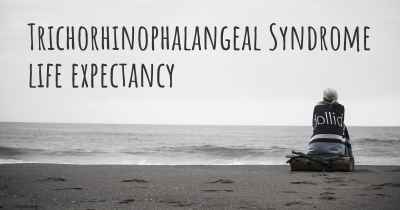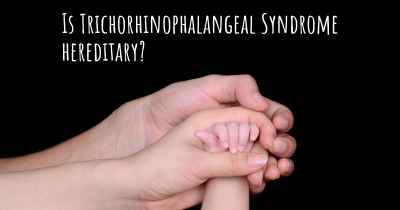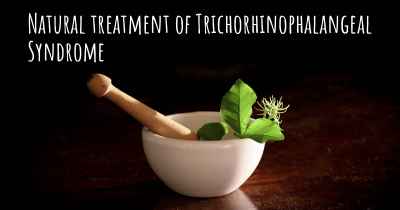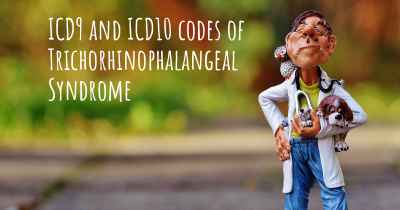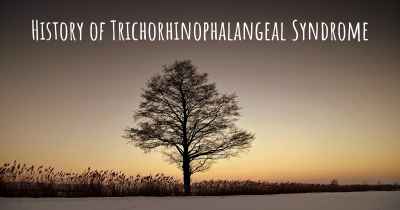Trichorhinophalangeal Syndrome diet. Is there a diet which improves the quality of life of people with Trichorhinophalangeal Syndrome?
Are you aware of a diet that can improve the quality of life of people with Trichorhinophalangeal Syndrome? Is there a diet that is suggested to avoid when having Trichorhinophalangeal Syndrome? See if there is a diet that can improve the quality of life of people with Trichorhinophalangeal Syndrome, recommended and to avoid food when having Trichorhinophalangeal Syndrome
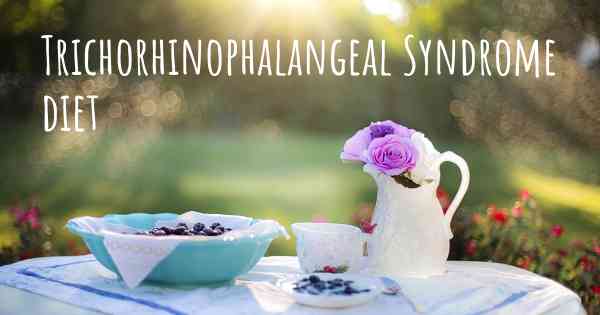
Trichorhinophalangeal Syndrome Diet: Improving Quality of Life
Trichorhinophalangeal syndrome (TRPS) is a rare genetic disorder characterized by distinctive facial features, skeletal abnormalities, and hair abnormalities. While there is no specific diet that can cure or treat TRPS, a well-balanced and nutritious diet can play a crucial role in improving the overall quality of life for individuals with this condition.
The Importance of a Balanced Diet
A balanced diet is essential for everyone, but it holds particular significance for individuals with TRPS. A well-planned diet can help manage symptoms, support overall health, and promote optimal growth and development.
Key Nutrients for TRPS
While there are no specific dietary guidelines for TRPS, focusing on certain nutrients can be beneficial:
- Protein: Adequate protein intake is crucial for growth, development, and tissue repair. Good sources of protein include lean meats, poultry, fish, eggs, dairy products, legumes, and tofu.
- Calcium and Vitamin D: Individuals with TRPS often have skeletal abnormalities, making it important to ensure sufficient calcium and vitamin D intake. Dairy products, leafy greens, fortified cereals, and exposure to sunlight are excellent sources of these nutrients.
- Omega-3 Fatty Acids: These healthy fats have anti-inflammatory properties and can support heart health. Include fatty fish (such as salmon and sardines), walnuts, flaxseeds, and chia seeds in the diet.
- Fruits and Vegetables: Colorful fruits and vegetables provide essential vitamins, minerals, and antioxidants. Aim for a variety of options to ensure a wide range of nutrients.
- Whole Grains: Opt for whole grains like brown rice, quinoa, whole wheat bread, and oats. These provide fiber, vitamins, and minerals.
Hydration and TRPS
Staying hydrated is important for everyone, including individuals with TRPS. Drinking an adequate amount of water throughout the day helps maintain overall health and supports various bodily functions. Encourage regular water intake and limit sugary beverages.
Considerations for TRPS
While a balanced diet is beneficial for individuals with TRPS, it is important to consider any specific dietary restrictions or recommendations based on individual needs. Consulting with a healthcare professional, such as a registered dietitian, can provide personalized guidance and ensure the diet is tailored to the individual's requirements.
Additional Lifestyle Factors
In addition to a healthy diet, other lifestyle factors can contribute to improving the quality of life for individuals with TRPS:
- Regular Physical Activity: Engaging in regular exercise and physical activity can help maintain a healthy weight, promote cardiovascular health, and improve overall well-being.
- Social Support: Building a strong support network, connecting with others who have TRPS or similar conditions, and seeking emotional support can positively impact mental health and overall quality of life.
- Regular Medical Check-ups: Regular visits to healthcare professionals, including geneticists, orthopedic specialists, and other relevant specialists, can help monitor and manage TRPS-related symptoms and provide appropriate care.
Conclusion
While there is no specific diet that can cure or treat TRPS, a well-balanced diet that includes essential nutrients can significantly improve the quality of life for individuals with this condition. Prioritizing key nutrients, staying hydrated, and considering individual needs are important aspects of managing TRPS through diet. Additionally, incorporating regular physical activity, seeking social support, and maintaining regular medical check-ups can contribute to overall well-being and enhance the management of TRPS.
